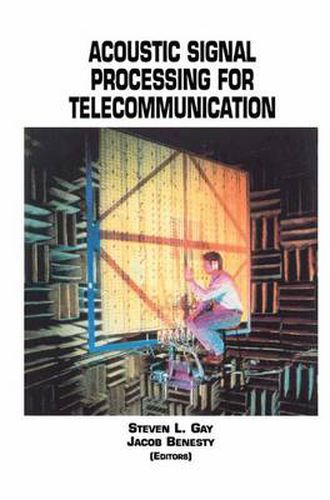Readings Newsletter
Become a Readings Member to make your shopping experience even easier.
Sign in or sign up for free!
You’re not far away from qualifying for FREE standard shipping within Australia
You’ve qualified for FREE standard shipping within Australia
The cart is loading…






This title is printed to order. This book may have been self-published. If so, we cannot guarantee the quality of the content. In the main most books will have gone through the editing process however some may not. We therefore suggest that you be aware of this before ordering this book. If in doubt check either the author or publisher’s details as we are unable to accept any returns unless they are faulty. Please contact us if you have any questions.
The ongoing revolution in electronic switching and transport technologies promises a dramatic increase in user satisfaction levels for future telecommunications networks. However, unless there is a corresponding improvement in the technologies of the acoustics of telecommunications, this promise will prove empty. The sense of presence that people feel when together in a room is largely due to the psycho-acoustic cues they sense from the human binaural hearing system evolved over thousands of years. Modern acoustic signal processing is just now beginning to be able to deliver that same experience to users in seperate locations. This includes the ability to communicate in full duplex with wider bandwidths and multiple audio streams (for instance stereo and 3D audio). It also involves locating and separating audio sources, suppressing noise, and using sound to automatically steer video cameras. This text presents digital signal processing techniques for telecommunications acoustics that are both cutting-edge and practical. Each chapter presents concepts as yet unused, but easily realizable with today’s technology. To this end, both new theory and new implementation techniques are presented. Topics include new adaptive filtering algorithms, multi-channel acoustic echo cancellation, noise control, virtual sound, sound source localization for camera tracking, source separation, and microphone arrays.
$9.00 standard shipping within Australia
FREE standard shipping within Australia for orders over $100.00
Express & International shipping calculated at checkout
This title is printed to order. This book may have been self-published. If so, we cannot guarantee the quality of the content. In the main most books will have gone through the editing process however some may not. We therefore suggest that you be aware of this before ordering this book. If in doubt check either the author or publisher’s details as we are unable to accept any returns unless they are faulty. Please contact us if you have any questions.
The ongoing revolution in electronic switching and transport technologies promises a dramatic increase in user satisfaction levels for future telecommunications networks. However, unless there is a corresponding improvement in the technologies of the acoustics of telecommunications, this promise will prove empty. The sense of presence that people feel when together in a room is largely due to the psycho-acoustic cues they sense from the human binaural hearing system evolved over thousands of years. Modern acoustic signal processing is just now beginning to be able to deliver that same experience to users in seperate locations. This includes the ability to communicate in full duplex with wider bandwidths and multiple audio streams (for instance stereo and 3D audio). It also involves locating and separating audio sources, suppressing noise, and using sound to automatically steer video cameras. This text presents digital signal processing techniques for telecommunications acoustics that are both cutting-edge and practical. Each chapter presents concepts as yet unused, but easily realizable with today’s technology. To this end, both new theory and new implementation techniques are presented. Topics include new adaptive filtering algorithms, multi-channel acoustic echo cancellation, noise control, virtual sound, sound source localization for camera tracking, source separation, and microphone arrays.